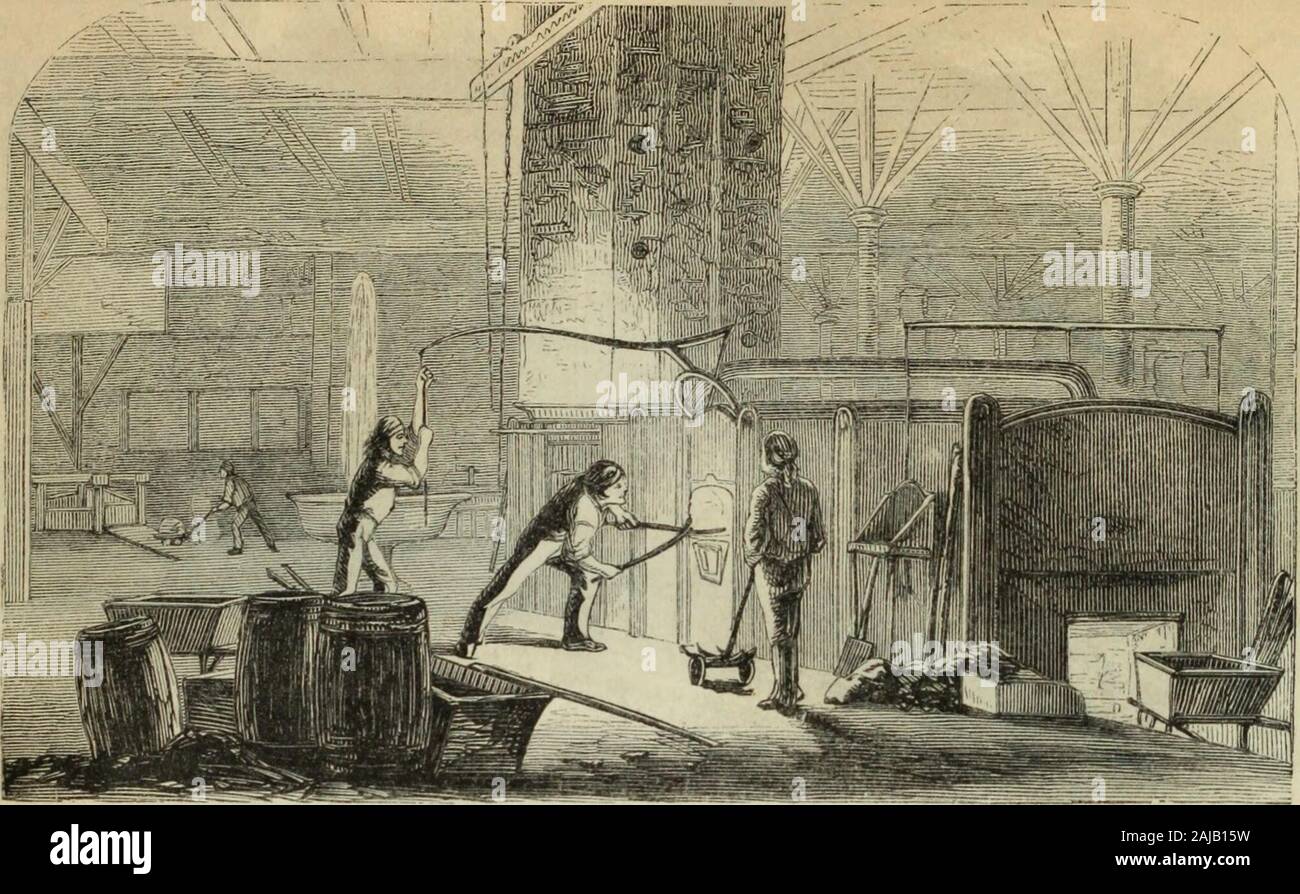Harper's New Monthly Magazine Volume 21 June to November 1860 . on a temporary track. Thesecars are iron platforms on wheels, upon whichare movable iron cases, and into these the lavais run every hour. The cinder, being silex in astate of fusion, is converted into glass upon ex-posure to the air, and consequently, when thecar is filled and the flow ceases, it soon becomeshardened upon the surface, although the interioris still in a fluid state. The cars are run off bya horse to the crane which you see yonder, andthe case there raised clear of the cake, whichis run forward to the edge of the pr

Image details
Contributor:
The Reading Room / Alamy Stock PhotoImage ID:
2AJB15WFile size:
7.2 MB (530.1 KB Compressed download)Releases:
Model - no | Property - noDo I need a release?Dimensions:
2009 x 1244 px | 34 x 21.1 cm | 13.4 x 8.3 inches | 150dpiMore information:
This image is a public domain image, which means either that copyright has expired in the image or the copyright holder has waived their copyright. Alamy charges you a fee for access to the high resolution copy of the image.
This image could have imperfections as it’s either historical or reportage.
Harper's New Monthly Magazine Volume 21 June to November 1860 . on a temporary track. Thesecars are iron platforms on wheels, upon whichare movable iron cases, and into these the lavais run every hour. The cinder, being silex in astate of fusion, is converted into glass upon ex-posure to the air, and consequently, when thecar is filled and the flow ceases, it soon becomeshardened upon the surface, although the interioris still in a fluid state. The cars are run off bya horse to the crane which you see yonder, andthe case there raised clear of the cake, whichis run forward to the edge of the precipice, wherea man knocks off one corner with a sledge ham-mer, the molten contents flow over the edge, andthe cake is eventually upset and rolls to the bot-tom. The scene presented at night is but littleinferior to that which we have just beheld. Returning to the front of the furnace, ourparty found the operatives busily engaged inrunning over the red-hot iron, with long barsprying and lifting the pigs to separate them from 158 HARPERS NEW MONTHLY MAGAZINE.. the sow, which, by means of hammers, was subse-quently broken into four parts. As soon as tlieiron sets in the pigs, which is known by itscolor changing to a deep cherry red, the pigs areseparated and raised from the sand, and whensufficiently solid, are piled or laid over eachother in such a manner as to admit the air toevery side, where they are left to cool—a processwhich of course requires several hours. Al-though the brogans of the men are thickly stud-ded with clout nails, making tlieir soles a massof iron, yet standing upon red-hot iron is not themost comfortable position which a man can oc-cupy; and hence the operation of starting thepigs is a very lively one while it lasts. From the blast furnace a track is laid to themills a distance of some two hundred yards, passing the front of the foundry, where all themachinery, tools, etc., used about the establish-ment are cast; and here the pigs are piled inhuge stacks